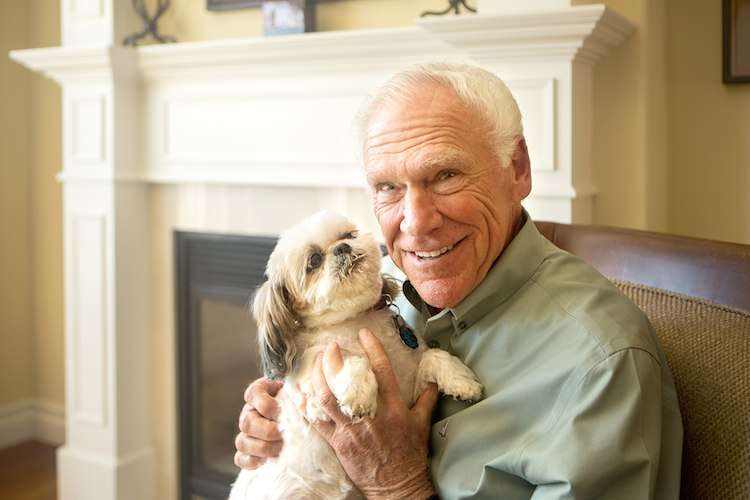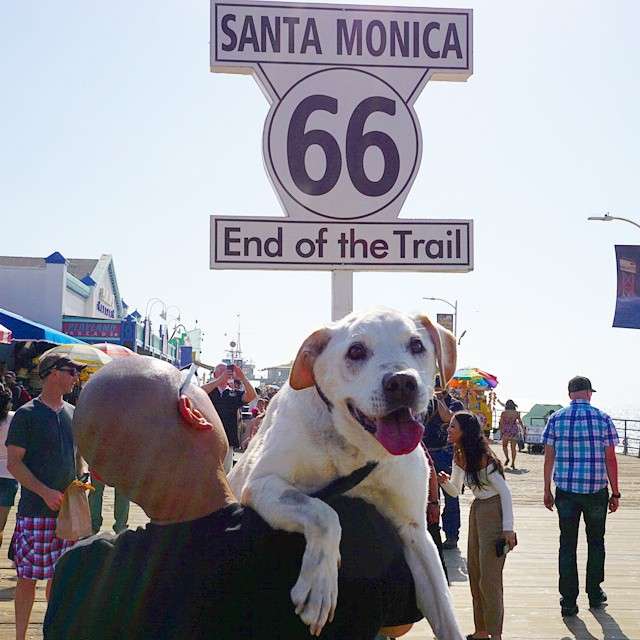College is Pairing Service-Dogs-in-Training With Stressed Students Who Could Use a Furry Friend
College can be stressful for anyone – but this university club has been cheering anxious students with guide dogs in training who need the experience.

Richard Avanzino was a bit of a wallflower as a kid. He didn't have any friends to speak of—well, friends on two legs, anyway.
His friends with four paws were his true pals, and because of them, he vowed to dedicate his life to helping dogs everywhere.
And he did: millions of them, in fact.
It all started back in 1976, when Avanzino arrived at the San Francisco SPCA. At the time, the primary discussion within the humane movement was how to best kill the animals, but that all changed after he encountered Sido.
Sido was a Collie mix whose owner had passed away in 1979 and specified in his will that he wanted the dog to be put down….but Avanzino had other ideas.
"We said we wouldn't let it happen—and we were sued, and it became a celebrity issue."
The SPCA was successful and won Sido's right to life, and the right to life for animals everywhere. It was established that dogs and cats would no longer be property, but sentient beings.
"It was decided that if there's a way to save their life, it should be done," said Avanzino, who is now 72 years old.
By the time the case was done, 3,000 potential adopters had come forward to adopt Sido. Avanzino, however, would be keeping her for himself, and she would live happily with him for 11 years.

Avanzino continued his advocacy work on a national level while working at the SPCA until 1998 when he joined Maddie's Fund, a nonprofit that awards millions of dollars in grants toward increased community lifesaving, shelter medicine education, and pet adoptions across the U.S.
As its president, he revolutionized animal sheltering by housing dogs and cats awaiting adoption in cozy, home-like settings rather than cages, setting a new standard of sheltering practices—and not just the cute, young ones, either.

"We're out to dispel myths, like that it's too expensive to take care of dogs with injuries and illnesses, or ones who are at first poorly behaved, or that there are not enough homes," Avanzino said of the organization's core mission. "We collaborate with organizations to focus on a single goal of proving an adoption guarantee."
With its endowment of $300 million, the nonprofit's main goal is to turn America into a "No-Kill Nation," with one of its key events being Pet Adoption Days. The unique catalyst sparking the adoptions is the promise of free grants to shelters for every animal that they can place. For pets who are harder to place, these adoption weekends can mean the difference between life and death.
Its most recent event back in May resulted in 5,277 adoptions in just two days.
"People stood in line for hours, showing up at 4, 5, 6am to get in line to adopt those pets because they knew they needed to be safe," he said of that event.
According to Avanzino, 71% of Americans who have currently pets think that they deserve to have the status of "family member."
"When we ask, ‘If you were stranded on an island would you pick a human or a pet as a companion, 60% say they'd rather have a pet than another human being" he said. "The American people are there with us and that's why I think it's so doable to provide this adoption guarantee."

In fact, over the past ten years, animal welfare has seen an incredible amount of
"Though the country went through the worst recession, with foreclosures and people losing jobs and economy distress, the humane community has been able to place companion animals with a success rate that has never before been achieved," he said.
Before Maddie's Fund was started, less than $1 million from foundations was contributed to animal welfare, nationally. This year, more than $100 million is coming from foundations.
Of the 180 million pets currently living in American households, the shelter and rescue community accounts for 39% of them—what makes that statistic particularly interesting is the fact that it's up 15% from ten years ago.
In large part, that's also thanks to the Internet. Decades ago, animal rescue was done through the media, classified ads, and word of mouth. People talked about it at parties, in places of worship, and by encouraging folks to go to shelters. These days, with the addition of social media and web databases, its much easier to get pets placed with foster homes or through adoptions.
In March 2015, Avanzino was named to Dog Fancy's list of "45 People who have Changed the Dog World" and was awarded the Assisi Award by the New Zealand Companion Animal Council in 2014.
"When people hear about adoptions, they're seven times more likely to get their next companion from a shelter or a rescue," Avanzino said. "Today, our movement knows that no-kill is doable. The only discussion if there is any is how soon and when. The atrocities of times gone by is behind us."
Keep This Story Alive By Sharing It With Your Friends:
Be the first to comment